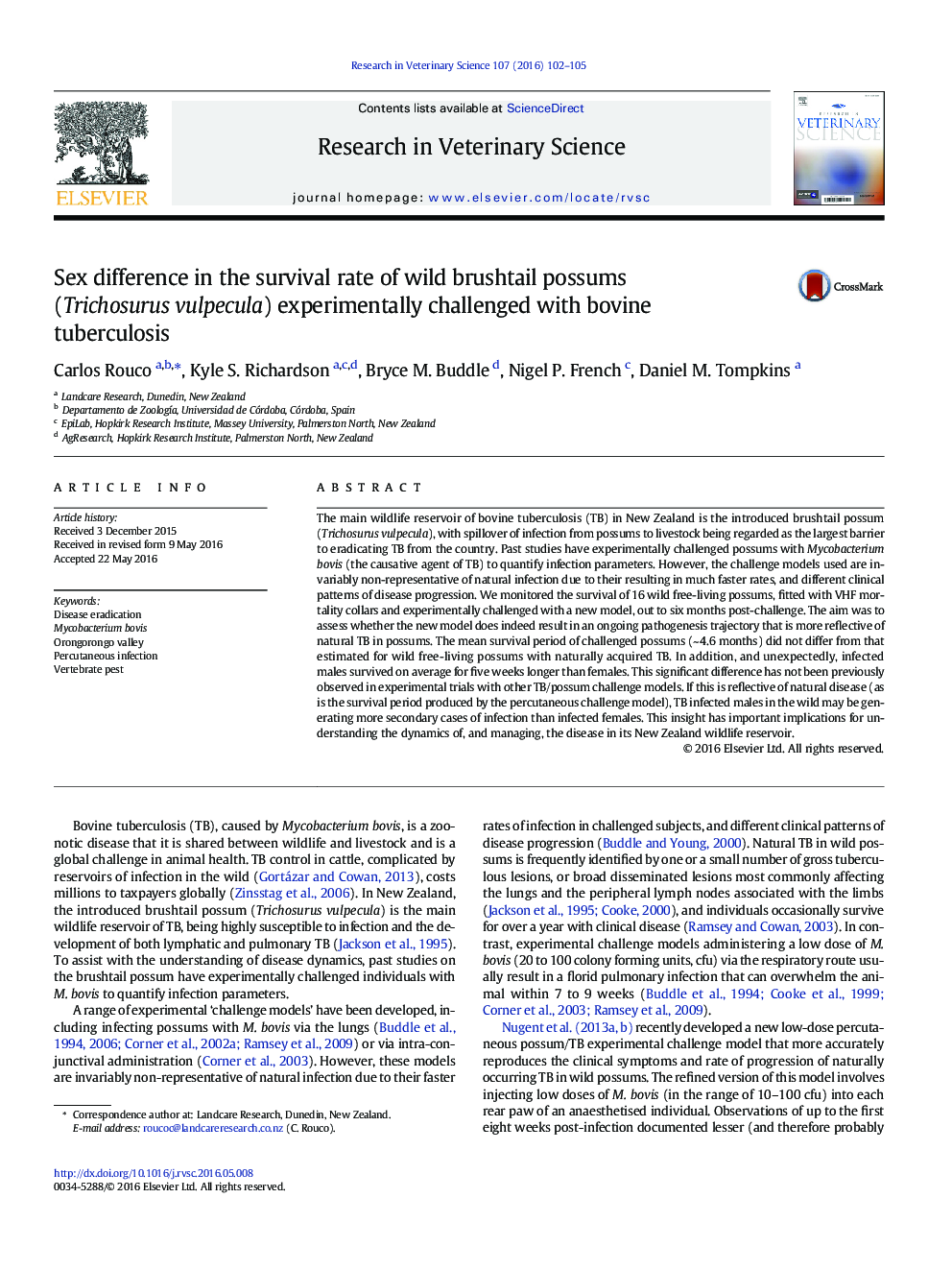| کد مقاله | کد نشریه | سال انتشار | مقاله انگلیسی | نسخه تمام متن |
|---|---|---|---|---|
| 5794423 | 1554304 | 2016 | 4 صفحه PDF | دانلود رایگان |

- The brushtail possum is the main wildlife reservoir of bovine tuberculosis (TB) in New Zealand
- A new experimental challenge model produces disease more representative of natural infection
- Using this model a sex bias, in which male possums survive longer with TB than female possums, is apparent
- Individual males under certain conditions may be responsible for a dis-proportionate amount of TB transmission
The main wildlife reservoir of bovine tuberculosis (TB) in New Zealand is the introduced brushtail possum (Trichosurus vulpecula), with spillover of infection from possums to livestock being regarded as the largest barrier to eradicating TB from the country. Past studies have experimentally challenged possums with Mycobacterium bovis (the causative agent of TB) to quantify infection parameters. However, the challenge models used are invariably non-representative of natural infection due to their resulting in much faster rates, and different clinical patterns of disease progression. We monitored the survival of 16 wild free-living possums, fitted with VHF mortality collars and experimentally challenged with a new model, out to six months post-challenge. The aim was to assess whether the new model does indeed result in an ongoing pathogenesis trajectory that is more reflective of natural TB in possums. The mean survival period of challenged possums (~Â 4.6Â months) did not differ from that estimated for wild free-living possums with naturally acquired TB. In addition, and unexpectedly, infected males survived on average for five weeks longer than females. This significant difference has not been previously observed in experimental trials with other TB/possum challenge models. If this is reflective of natural disease (as is the survival period produced by the percutaneous challenge model), TB infected males in the wild may be generating more secondary cases of infection than infected females. This insight has important implications for understanding the dynamics of, and managing, the disease in its New Zealand wildlife reservoir.
Journal: Research in Veterinary Science - Volume 107, August 2016, Pages 102-105